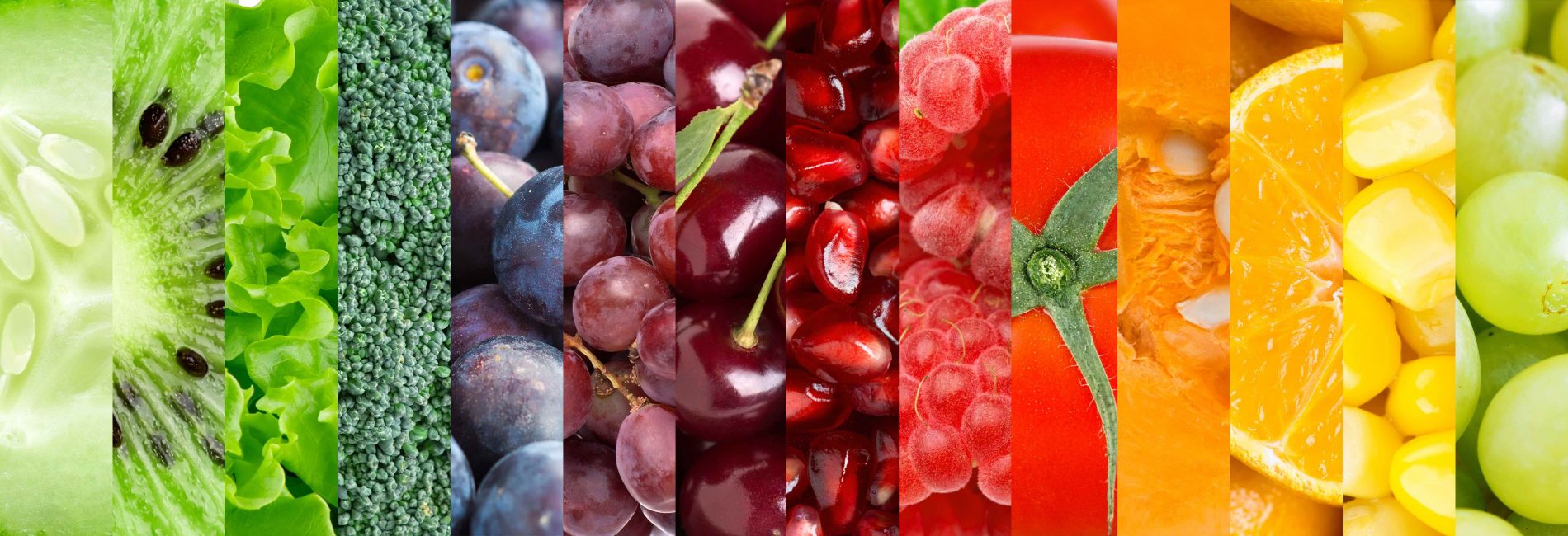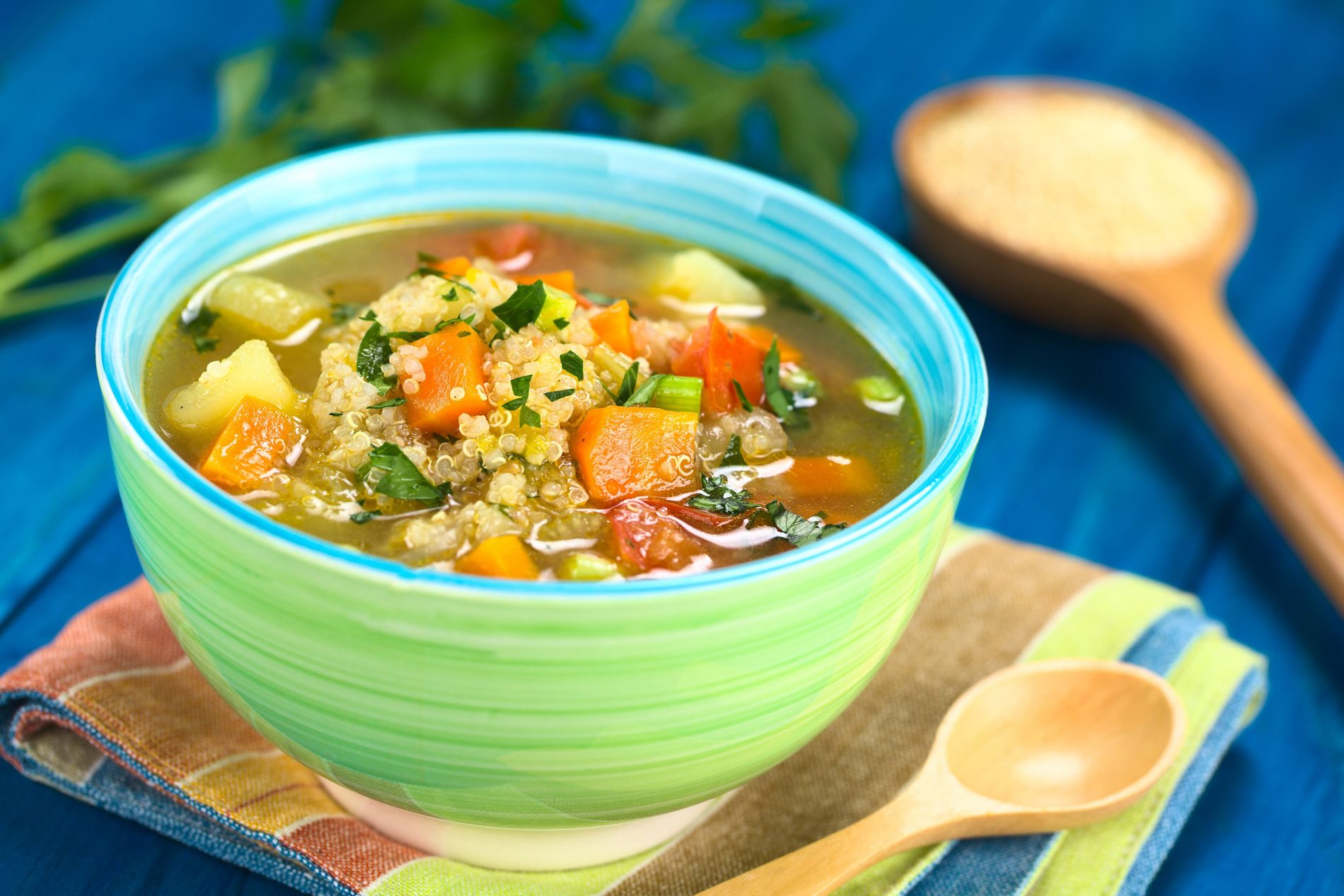We’ve all heard the phrase “eat your greens”. But, what we should really be eating is the rainbow. Phytonutrients come in all different colours—green, yellow-orange, red, blue-purple, and white. Different colours contain different compounds. Each of which have unique healing properties. In order to promote good health eating a variety of colours is crucial.
What Are Phytonutrients?
The term “Phytonutrients” refers to the several thousand healthful, non-nutritive compounds found in plants. These compounds are referred to as “non-nutritive” because they do not supply calories like proteins, carbohydrates, or fats do.
Despite this, they benefit the body in several ways. Studies show that people who eat more plant foods have reduced risk of chronic diseases such as diabetes, heart disease, and cancer.
In the plant itself, phytonutrients provide many functions. They protect the plant from pests and environmental stressors, and impart colour and distinctive tastes and smells.
In the human body, phytonutrients;
- Stimulate enzymes that help the body get rid of toxins
- Boost the immune system
- Improve cardiovascular health
- Promote healthy estrogen metabolism
- Stimulate the death of cancer cells
This is all pretty powerful stuff!
The Impact Of ‘Colour’
Organic fruits and vegetables are rich sources of phytonutrients. Same with legumes, herbs/spices, nuts/seeds, and teas. Aiming for one to two of each colour per day is a healthy goal to strive for.
Darker-coloured plants are generally higher in phytonutrients. However, fruits and veggies from the white family do have potent contributions to make.
What Do The Different Colours Mean?
Red foods contain phytonutrients that may help reduce the risk of certain cancers and protect the brain, heart, liver, and immune system.
Examples of red foods:
- Beets
- Bell pepper
- Blood oranges
- Cranberries
- Cherries
- Grapefruit (pink)
- Goji berries
- Grapes
- Onions
- Plums
- Pomegranate
Orange foods help protect the immune system, eyes, and skin. They also reduce the risk of cancer and heart disease.
Examples of orange foods:
- Apricots
- Bell pepper
- Cantaloupe
- Carrots
- Mango
- Nectarine
- Orange
- Papaya
Yellow foods are beneficial because they contain compounds that are anti-cancer and anti-inflammatory. They protect the brain, heart and vasculature. In addition to your eyes, and skin.
Examples of yellow foods:
- Apples
- Asian Pears
- Bananas
- Bell Peppers
- Star Fruit
- Squash
Green foods contain compounds that are anti-cancer and anti-inflammatory. They too protect the brain, heart and vasculature, liver, and skin. In addition, green foods that help with liver function also help balance hormones.
Examples of green foods:
- Avocados
- Asparagus
- Green Apples
- Bell Peppers
- Bean Sprouts
- Bok Choy
- Broccoli
- Zucchini
- Okra
- Cabbage
- Celery
- Spinach
- Kale
- Cucumbers
Blue/Purple/Black foods contain compounds that are anti-cancer and anti-inflammatory. They too protect the brain, and heart and vasculature. It’s interesting to note that out of all the colours, this is the category that most people eat the least of.
Too little blue/purple can result in issues with the brain. This is because these foods protect the brain from damage. In addition they also promote healthy cognition and memory.
Examples of blue/purple/black foods:
- Berries
- Eggplants
- Figs
- Plums
- Prunes
- Raisins
White/Tan/Brown foods – When thinking of white/tan/brown foods, processed foods may come to mind. Foods such as;
- Bagels
- Cereals
- Breads
- Pastas
- Cakes
- Cookies
- Crackers
Avoid those and focus on foods that are beneficial to your health such as;
- Nuts
- Fruits
- Vegetables
- Legumes
- Spices
- Seeds
The compounds in these earthy coloured foods are anti-cancer and anti-inflammatory. Additionally, like green foods, there are certain compounds that can assist with liver and hormone health.
Examples of white/tan/brown foods:
- Ginger
- Apples
- Cacao
- Onions
- Garlic
- Coffee
- Coconut
- Dates
- Mushrooms
- Nuts
- Beans
- Tea

Easy Ways To Eat Your Colours
Start by observing the colours you eat. Humans are creatures of habit. As such we generally tend to eat the same foods over and over again. This does our body a disservice.
In order to get more phytonutrients into your diet, you are going to have to mix things up! It has been estimated that 80% of people are missing one or more of the phytonutrient colours in their diet. Which sounds likely when you think that most people stick to eating processed foods that are brown, yellow, or white.
Think of a typical breakfast menu – waffles, pancakes, ready-to-eat cereal, sausage, and eggs. This doesn’t provide very many phytonutrients now, does it? Opting for a fruit smoothie with blueberries, peaches, raspberries and spinach would be way more beneficial. There’s four of the seven colours done for the day.
Click here for “Breakfast On The Go – Mixed Berry Smoothie” recipe.
Note: When implementing this way of eating, keep in mind that fruits contain sugar. Even though it’s a natural form of sugar, fruits can still spike insulin levels. As such, be sure to load your cart with heaps of colourful vegetables and just a few fruit.
Click here to read, “Is It Time To Stop Eating Fruit?”
Simple Ways To Jump Start A Phytonutrient Diet
First, make it your goal to try one new plant food (fruit, vegetable, nut, seed or legume) per week. Explore ethnic stores for greater variety. Second, stock up on organic frozen vegetables for easy cooking or organic berries as they tend to retain their phytonutrients well. Third, keep fruits and vegetables where you can see them. This will help you to remember to eat them.
Next, keep a bowl or container of fresh cut vegetables on the top shelf of refrigerator. Always within easy reach. If you must eat something sweet after dinner, choose a fruit for dessert (fruit kabobs, berry compotes, fruit salads, etc.) Have dishes with lots of vegetable variety (e.g., soups, stir-fry).
Try and choose darker vegetables over lighter to maximize nutrient content. Make the switch from mashed white potatoes to sliced carrots or mashed cauliflower. Also, toss in red pepper, tomato sauce, garlic, onions or broccoli to omelets.
You can also add rinds of oranges or lemons to your water. Try a little bit of every colour at a salad bar. Be generous with your use of herbs and spice. Devote some time at the start of your week to prepare your meals and recipes. This will make eating whole foods throughout the week so much easier!
Make It Easy!
To make things easier for myself, I re-arranged my fridge to emphasize the food colours. Forget separating fruits and vegetables. I now separate things by colour. It’s made preparing my meals and shakes so much easier. I open the fridge and grab at least one or two items from each group. It’s a good reminder to add variety to my dishes and it looks pretty!
It is also a great way to teach kids about the importance of healthy, colourful foods. Make them choose which colours they want to eat. Try making it into a little game. Have a colour chart that they can check off each day to make sure that they are eating all the colours of the rainbow.
Now go on, eat the rainbow. Your cells will thank you for it!
Dr. Nathalie Beauchamp, B.Sc,. D.C.
Dr. Nathalie Beauchamp, B.Sc., D.C. is an Ottawa based chiropractor, a former professional natural figure/bodybuilder, a wellness consultant, lecturer and TV personality. She is the co-author of the published book—Wellness On The Go: Take the Plunge- It’s Your Life! and the author of the upcoming book Hack You Health Habits, scheduled to be released in the summer of 2017. She is the owner of Santé Chiropractic and Wellness Centre and the founder of the annual Ottawa Wellness Expo a community based event that gathers over two thousand people in Ottawa each year. Dr. Nathalie’s mission is to lead, educate and empower people to be the healthiest and best versions of themselves.


